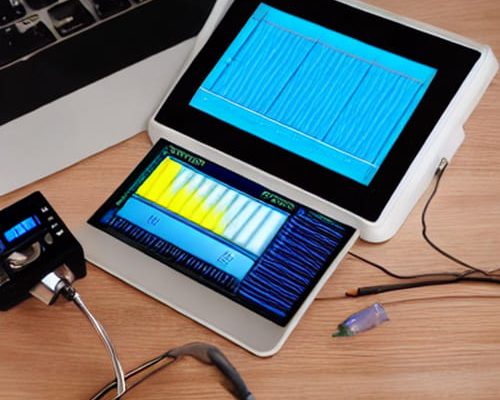Principles of Power Quality Work in Argentina:
The essential functionality and performance of the equipment connected to the distribution network are directly impacted by the quality of the power supply. The equipment is considered to function as intended and to have a lifetime that is roughly equal to the value stated.

Additionally, it is anticipated that the network will be stable enough to guard against problems like subpar output or lost functionality. There are several problems with power quality in the power system. Regardless of how long they last, these power quality disruptions might harm your device. To avoid equipment failure, maintaining power quality is crucial.
This blog post will look at the research required to gauge the reliability and quality of power. The examination of various power quality systems and methods for assessing the effect and the control comes next. Disruptions to power quality have repercussions that are not immediately noticeable, in contrast to dependability, which is concerned with lengthy power outages. However, in other cases, a power quality interruption has an instantaneous effect due to process delays or equipment damage. This is especially valid for pauses, breaks, and transients. The impacts of the power quality disruption may not always be immediately apparent in other situations. Deterioration of the equipment is one example. Because of this, equipment damage goes uncontrolled for years. In other cases, power quality issues will lead to further losses that are seen as unavoidable and are thus disregarded.

The Consequences of Poor Electricity:
Direct financial effects include:
- Manufacturing losses
- The cost of restarting a process is incurred.
- Costs of equipment damage and repair
- More problems and delays
- Worries for the welfare and safety of people
- Financial costs associated with contract violations
- Financial penalties for environmental violations
- The disruption led to an increase in utility costs.
Among the indirect economic effects are:
- The expenses incurred by a firm due to a revenue or income delay.
- The monetary impact of losing market share
- What it will cost to build brand value again
Social and economic effects include:
- The increase in temperature within a building may harm people’s health, safety, or performance.
- A personal harm or concern
- An electrical hazard might arise if the change in power quality is not noticed.


Recognizing the Root Causes of Poor Power Quality:
A power supply system’s voltage, frequency, and waveform are assessed to determine its power quality. However, a variety of factors affect power quality. The following issues concerning the quality of power are covered in this blog:
- Voltage Constancy
- Voltage Disparity
- Syllables in Current
- Flashing or Fluctuating Voltage
- Dips in Voltage (sometimes known as “sags”) and Interruptions
Due to their rarity, other phenomena including swells, transients, inter harmonics, and noise have received less attention.
1. Voltage Constancy
Stable-state voltage magnitudes correspond with long-term sustained voltage magnitudes (minutes or hours). Equipment failure, an increase in energy consumption, and system malfunction are the main repercussions of prolonged high voltage (overvoltage) or low voltage (undervoltage).
2. Voltage Disparity
Increased losses are often linked to unbalanced voltage, particularly in induction and three-phase motors.
- Bearing wear and reverse torque are the effects of this.
- Stator and rotor heating up further
- Installation cables’ current capacity is decreasing.
- Losses on the neutral conductor have increased.
- More energy is wasted on wires.
3. Syllables in Current
Harmonic currents are produced and introduced into the power system by all energy users. Alternating currents with harmonic currents have fundamental frequencies that are multiples of 50 hertz. The most common non-linear electrical equipment that emits harmonic currents is computers, variable speed drives (VSD), and discharge lights. Particularly harmful to the installation and the power distribution system are harmonic currents. Harmonics have a few negative effects, including broken components, damaged installation parts, component loading, inefficient use of the installation’s current carrying capacity, shorter component lifetime, and ineffective functioning of protective components.
4. Flashing or Fluctuating Voltage
Flicker is a voltage waveform envelope modulation. Incandescent lighting sources have cyclical swings in light intensity as a result. Due to this irregular variation in light output, some people may feel uncomfortable, have less productivity, have headaches, and, in rare circumstances, have seizures.
5. Dips in Voltage
The bulk of equipment is unaffected by voltage sags and interruptions; however, longer interruptions often cause output loss due to equipment tripping. The cost of a long interruption is sometimes seen to follow a logarithmic curve rather than being proportionate to its duration. Experts claim that the following factors significantly affect the cost of a protracted interruption:
- For instance, the economic difference between a disruption lasting one second, one minute, and one hour is thought to be negligible in the manufacturing industry.
- The date, time, and place (weekday, weekend, daytime, midnight) of the event
To assess the monetary impact of outages on all customers, AEMO determines the value of customer dependability (VCR). Even if most of these figures represent consumers’ willingness to pay to prevent a disturbance, it is predicted that this willingness to pay is strongly connected with the actual cost. These calculations show that a one-second interruption costs around 20% less than an hour-long disruption.
How Could Power Quality Issues Be Reduced?
CareLabs provides a variety of services to identify and assess power quality issues. Among them are:
- Load Flow Analysis: This analysis is carried out in accordance with the operating conditions. It makes estimations for system losses, voltage levels, power factor, and power flow rates.
- This method involves employing computer algorithms to find and forecast potential harmonic problems. Based on the results, reduction measures are also offered.
- Analysis of Transients and Surges explains how transients and surges are produced.
- This study will track the short-term rise and fall of the voltage and its value and direction.
- Reactive Power Study: This investigation will establish the ideal reactive power at the load and distribution ends.
- To meet demand, save energy surcharges, and fuel usage, this project would monitor and coordinate captive electricity.
The ETAP (Electrical Transient Analysis Program) – Electrical Transient Analysis Program software is used by CareLabs to analyze and assess power quality. The best software available for doing calculations and simulations for all electrical system components and ensuring equipment safety. In all major cities, including Buenos Aires, Córdoba, Rosario, and Mendoza, we provide power quality assessments. To improve the reliability and quality of your electrical system, CareLabs provides the best service possible. Contact us right now to arrange a power quality inspection or to get a quote!
LATEST NEWS
Harmonic Study &
Analysis



